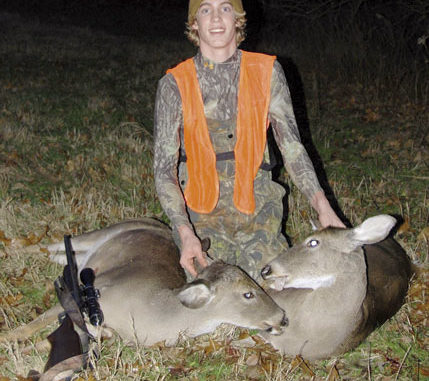
Deer hunters in eastern North Carolina should take advantage of a “trickle” of buck activity in December.
Beginning the last week of October and lasting through mid-November, the breeding season for whitetail deer in eastern North Carolina descends upon the land.
Both hunter and hunted get in the woods to do their thing until near and total exhaustion sets in. For many hunters, the season is effectively over by Thanksgiving, with the possible exception of taking a couple of does for the freezer. The focus shifts away from rifles and tree stands to shotguns and duck blinds.
Mike Noles, an outfitter in Washington and Hyde counties, thinks deer hunters who hang it up after the primary rut may be missing out on the opportunity to take a trophy buck.
“We have so many does in this part of the state that it is impossible for the bucks to get to them all during the primary rut,” said Noles, who operates Conman’s Guide Service on property near the town of Creswell. “Most hunters reserve the latter part of the season for thinning out their doe herd and taking meat for the freezer, but from a biological standpoint, that is backwards.”
On the 6,000 acres he manages, Noles encourages hunters to harvest does early on, taking advantage of archery and blackpowder seasons from mid-September to mid-October.
“Our doe-to-buck ratio is in the 7-to-1 range on our properties here in eastern North Carolina,” he said. “It doesn’t make sense to have your bucks expend all that energy breeding does that would be harvested after the rut. You also have a more defined primary rut by removing does early in the season.”
Noles said he sees a fairly strong secondary or “trickle” rut 28 days after the primary rut ends. For hunters who visit his property during December, this often means an additional week to 10 days of rutting activity.
“Our trickle rut is often more aggressive than the primary rut due to the reduced number of unbred does moving around with the same number of bucks,” he said. “We suggest that our hunters use rattling and grunting tactics when the second rut comes in. But you need to be careful when hunting these secondary rut bucks. They have been mixing it up pretty good since the middle of October when the pre-rut started, and they won’t tolerate a lot of loud antler crashing and dominant grunting.”
Noles suggests that late-rut hunters tone down their rattling tactics. He said it’s better to just tickle the ends of the rattling antlers, enough to get their attention, but not spook them off.
“Any buck that can be intimidated will be, (at) this time of year,” he said. “The same goes for grunting; use a yearling buck grunt and try not to sound too enthusiastic.”
Noles strongly advises not to use doe or fawn bleats late in the year. This has nothing to do with deer, but everything to do with a large number of black bears in his area who liken a fawn bleat to the ringing of a dinner bell.
“We had the second-heaviest black bear ever killed in North Carolina come off of our property last year,” said Noles. “It weighed in at 760 pounds, and the scary thing is, I’ve seen two others out here that were bigger than that.”
In Johnston County, Jason Parker works as a wildlife technician for the Howell Woods Environmental Learning Center, which offers semi-public deer and hog hunting on its 3,000-acre management tract, land that has been entrusted to Johnston Community College.
Like Noles’ properties, Howell Woods has an overabundance of does, which means a stronger secondary rut in the middle of December.
“We are very liberal in our doe harvests,” Parker said. “Since we participate in the North Carolina DMAP program, we get between 60 and 70 doe tags each year for just 3,000 acres.”
Parker said his hunters take a lot of does early in the season but slack up in the second half of October when the primary rut comes in. Unlike Noles, however, Parker said his hunters pound the does pretty hard from Thanksgiving until the end of the season on Jan. 1.
“We have management partners, hunters who have been hunting this property for years, and they’ll alert us when they start seeing bucks chasing does again in December,” he said. “That’s when we tell our 2-day hunters to be careful about shooting does on sight. If they have the opportunity to watch her for a while, they may have a better chance at getting a shot at a buck.”
Keeping a sharp eye out for travel patterns, along with any reported doe-chasing activity, often signals the start of the secondary rut. Noles said travel routes may be hard to see or may look like well-worn cattle paths. He maintains a number of box stands adjacent to travel routes and refrains from hunting them earlier in the season. He plants at least 400 acres of food plots on his property and said deer will show a preference for certain foods when the weather gets cold.
“There’s a lot of new-growth wheat that we plant in late October. It comes up during November and ripens when it gets cold in December,” Noles said. “Of course, we also bait with corn and beans, and deer will be hitting these pretty good, but I’ve found they utilize the baited stations better if they are near a natural food source like the wheat.”
Noles said a trophy deer on his property is a 3½- to 4½-year-old buck that sports a 18- to 19-inch spread. His properties support large numbers of deer but do not often produce record-book bucks.
“I’ve never gotten a lot of flavor out of antlers in the first place,” he said, grinning.

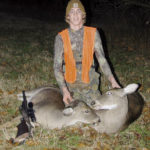
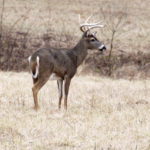
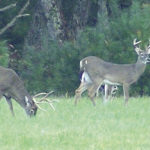
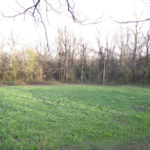
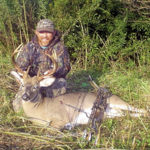
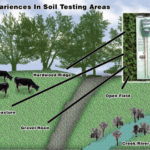
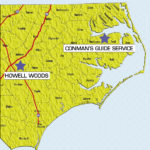



Be the first to comment